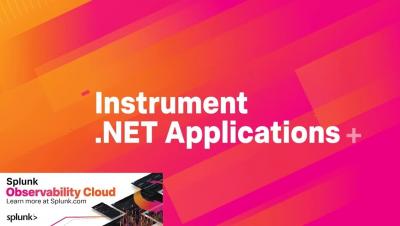Operations | Monitoring | ITSM | DevOps | Cloud
August 2021
Get your AWS CloudWatch data in!
Auto-instrument your .NET applications with OTEL Collector
Auto-instrument your Java applications with an OTEL Collector
How to Determine Whether an Error is Really an Error
There is nothing worse than waking up to an angry customer complaining that your website is failing to accept their payment at checkout. This may be worrying for some since payments not being processed can be equivalent to losing money; however with Tag Spotlight, this should be a relatively quick problem to dissect. The key question here is whether this is an issue that all our customers are facing or an isolated event.
How to Monitor Your AWS Workloads
A WS is a comprehensive platform with over 200+ types of cloud services available globally. As organizations adopt these services, monitoring their performance can seem overwhelming. The majority of AWS workloads behind the scenes are dependent on a core set of services: EC2 (the compute service), EBS (block storage), and ELB (load balancing).
The Best Things Come in Content Packs: Synthetic Managing and Third-Party APM
We recently announced the new Splunk App for Content Packs, your single source for all the goodness that is content packs. This new app makes it easier than ever to get started with Splunk for IT use cases. Individual content packs come with prepackaged content and out-of-the-box searches and dashboards, helping streamline workflows and ensuring you get the most out of your usage with Splunk IT Service Intelligence (ITSI) and Splunk IT Essentials Work (ITE Work).
Welcome to Splunk!
Fast and Powerful Log Investigation for DevOps Teams
Access the Cloud Monitoring Console from Anywhere
Have you ever wanted to check the status of your Splunk Cloud Platform deployment but can't easily access your laptop? We've got you covered— the Cloud Monitoring Console is now available on Spunk Mobile.
3rd Party APM: Unite Your Legacy APM Data on Your Journey to Observability!
Today you likely have one or more legacy APM (Application Performance Monitoring) solutions. You are moving from a monolithic architecture to microservices, and you are accelerating your journey to Cloud, and you need to deliver at speed with scale and quality to your customers. Sadly, visibility into these results are limited to each of these solutions and their interfaces.
What's New in the Splunk Dataflow Template
The Splunk Dataflow template is an indispensable tool that allows Google Cloud customers to easily engineer a horizontally scalable and fault-tolerant logging export pipeline into Splunk® Enterprise and Splunk Cloud Platform™.
Product Explainer Video: Splunk Infrastructure Monitoring for Real-time Monitoring in the Cloud
Empower Your Organization with Splunk On the Go
Want to access your Splunk data on the go? We’re making it easier than ever to unlock value from your data anywhere at any time. Regardless of your role or level of technical expertise, you can use Splunk Mobile to view dashboards and take action from your mobile device.
The Power of Splunk
Go with your Data Flow - Improve your Machine Learning Pipelines
Many of you are familiar with Splunk’s Machine Learning Toolkit (MLTK) and the Deep Learning Toolkit (DLTK) for Splunk and have started working with either one to address security, operations, DevOps or business use cases. A frequently asked question that I often hear about MLTK is how to organize the data flow in Splunk Enterprise or Splunk Cloud.
A Zero Trust Security Approach for Government: Increasing Security but also Improving IT Decision Making
Public sector organisations are in the middle of a massive digital transformation. Technology advances like cloud, mobile, microservices and more are transforming the public sector to help them deliver services as efficiently as commercial businesses, meet growing mission-critical demands, and keep up with market expectations and be more agile.
What is Splunk Security Analytics for AWS?
Dashboard Studio Tips: What's New in 8.2.2106
Here on the Splunk Dashboards team we take your feedback seriously. While we can't get to every request right away, we do add most requests to the backlog so we can roll your feedback into the product. In this blog post, we'll cover new features and improvements to Dashboard Studio in Splunk Cloud Platform 8.2.2106 based on feedback from you, our customers.


















